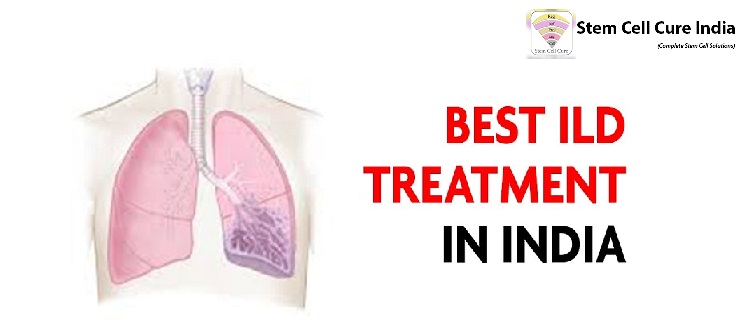Interstitial Lung Disease (ILD) refers to a group of lung disorders affecting the interstitium, which is the tissue and space around the air sacs in the lungs. These disease cause inflammations and scarring of the lung tissue, leading to breathing difficulties.
“Interstitial Lung Disease (ILD) Treatment in India” is a significant health concern, with various factors contributing to its prevalence. Occupational exposures, such as those in the agricultural and construction sectors, as well as environmental factors like air pollution and infections, can contribute to ILD. Additionally, autoimmune diseases and genetic factors may play a role.
Causes of Interstitial Lung Disease (ILD): –
Interstitial Lung Disease (ILD) can have various causes, and they can be categorized into different groups: –
- Environmental and Occupational Exposures: -Prolonged exposure to certain substances like asbestos, silica dust, coal dust, or bird dropping can contribute to ILD.
- Autoimmune Disease: – Conditions like rheumatoid arthritis, systemic sclerosis, and lupus may lead to ILD as an associated complication.
- Drug Induced ILD: – Some medications, such as certain chemotherapy drugs, anti- inflammatory drugs, and antibiotics, may cause ILD as a side effect.
- Infections: – Chronic infections, especially viral infections like Epstein- Barr virus or cytomegalovirus, can contribute to ILD.
- Idiopathic Interstitial Pneumonias (IIPs): – In many cases, the cause remains unknown, and these are termed idiopathic interstitial pneumonias.
Symptoms of Interstitial Lung Disease (ILD): –
Symptoms of Interstitial Lung Disease (ILD) can vary, but common ones include: –
- Shortness of Breath (gradual onset of breathlessness)
- Persistent Cough
- Fatigue (feeling tired or weak)
- Chest Discomforts (may experience chest pain or tightness)
- Unintended Weight Loss
- Clubbing of Fingers (fingerprints may become enlarged and rounded, known as clubbing)
Diagnosis of Interstitial Lung Disease (ILD): –
The diagnostic process may include are
- Pulmonary Function tests (PFTs): – These tests assess lung function, including the ability to move air in and out of the lungs and gas exchange.
- Lung Biopsy: – A lung biopsy may be necessary to confirm the specific type of ILD and rule out other conditions. This can be done through various methods, including surgical biopsy or transbronchial biopsy.
- Blood Tests: – Blood tests may be conducted to check for autoimmune markers, infections, and other possible causes.
- High- resolution computer tomography (HRCT): – HRCT scans of the chest are crucial for evaluating lung structure and identifying patterns of scarring or inflammation characteristic of ILD.
- Bronchoscopy: – In some cases, a bronchoscopy may be performed to obtained samples from the lungs for further analysis, such as bronchoalveolar lavage or lung biopsy.
Stem Cell Therapy for Interstitial Lung Disease (ILD) in India: –
“Stem cell therapy for Interstitial Lung Disease (ILD) in India” holds promise due to its potential to address tissue damage and inflammation. Discover hope with “Stem Cell Cure India”, where cutting-edge stem cell treatments offer potential relief for COPD. In this innovative approach, stem cells are administered to promote lung tissue regeneration and modulate the immune response. The therapy aims to reduce inflammation, fibrosis, and enhance the repair of damaged lung tissue, potentially improving respiratory function.
Clinical trials and studies are ongoing to determine the safety and efficacy of “stem cell treatment for ILD in India”. India’s medical landscape is actively participating in global efforts to advance stem cell research, making it a destination individual seeking alternative or complementary treatments for ILD.
If you are considering treatment for “ILD treatment in New Delhi” using stem cells may need you to speak with a physician with experience in this field. Since there aren’t any FDA-approved stem cell treatments for ILD at the moment, you need to be sure the provider you’re seeing is reliable.

